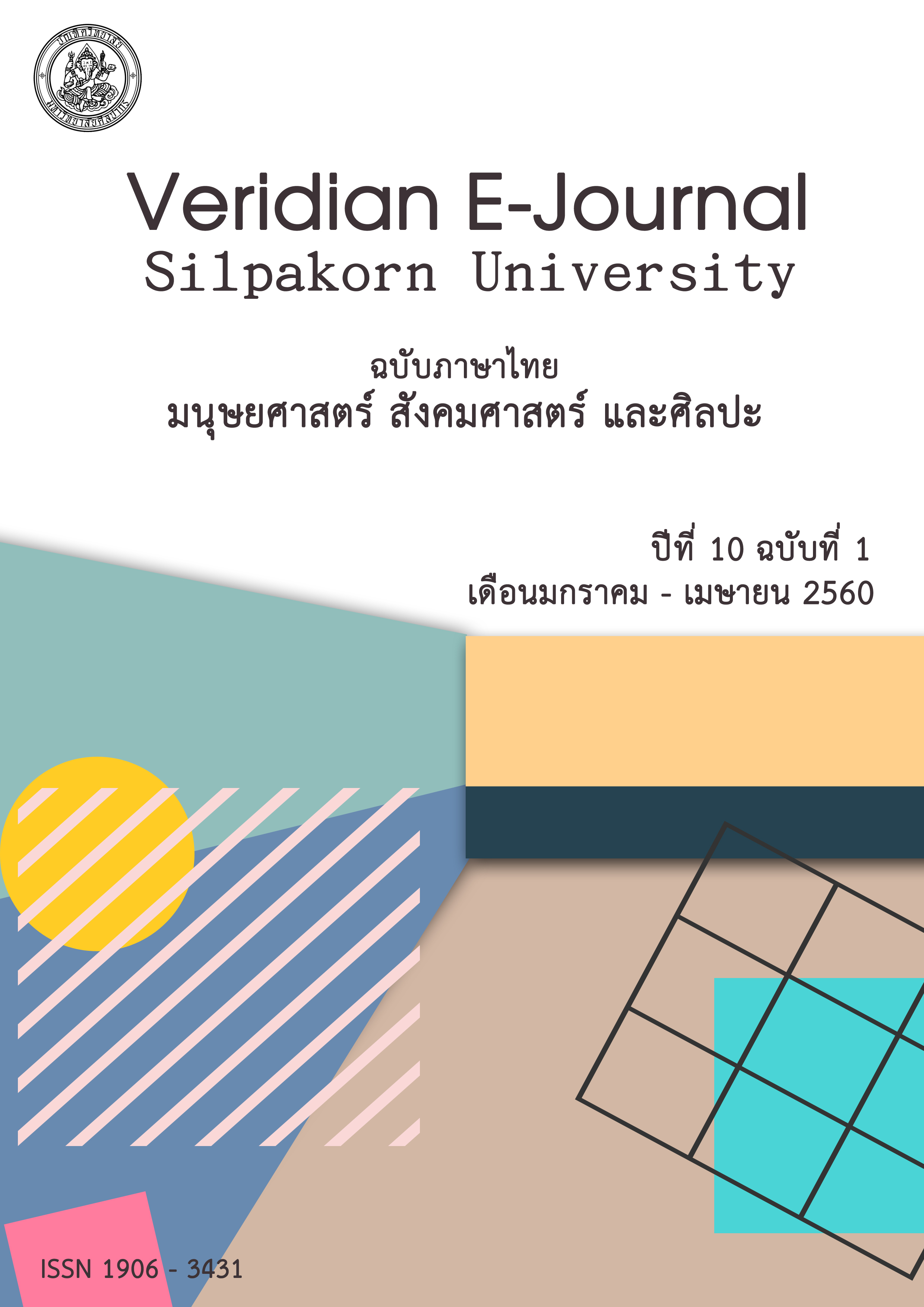คาร์บอนฟุตพริ้นท์จากการบริโภคในอุตสาหกรรมท่องเที่ยวของแหล่งท่องเที่ยวทางทะเลและชายหาด ในพื้นที่อำเภอเกาะสมุย จังหวัดสุราษฎร์ธานี
Main Article Content
Abstract
ปัจจุบันการพัฒนาการท่องเที่ยวในภูมิภาคต่างๆ ทั่วโลก ได้ให้ความสำคัญกับผลกระทบสิ่งแวดล้อมจากพฤติกรรมการบริโภคของนักท่องเที่ยวและจากธุรกิจท่องเที่ยวที่ส่งผลในวงกว้าง โดยมิได้จำกัดอยู่เฉพาะขอบเขตของแหล่งท่องเที่ยวนั้นแห่งเดียว หากแต่ส่งผลต่อการเปลี่ยนแปลงสภาพภูมิอากาศโลก ซึ่งเป็นปัญหาที่ได้รับการยอมรับว่าเป็นปัจจัยลบตัวใหม่ที่เกี่ยวข้องโดยตรงกับอุตสาหกรรมการท่องเที่ยวการวิจัยในครั้งนี้มีวัตถุประสงค์เพื่อคำนวณปริมาณคาร์บอนฟุตพริ้นท์จากอุตสาหกรรมท่องเที่ยวรวมทั้งลักษณะการบริโภค พฤติกรรมและการดำเนินกิจกรรมที่เกี่ยวข้องกับคาร์บอนฟุตพริ้นท์ในอุตสาหกรรมท่องเที่ยวเกาะสมุยโดยทำการเก็บรวบรวมข้อมูลปฐมภูมิจากนักท่องเที่ยวทั้งชาวไทยและชาวต่างประเทศจำนวน 600 ตัวอย่างและทำการเก็บรวบรวมข้อมูลทุติยภูมิจากองค์กรและหน่วยงานที่เกี่ยวข้องในเรื่องของสถิติการบริโภค ผลการศึกษาผลการประเมินคาร์บอนฟุตพริ้นท์พบว่าแหล่งที่ปล่อยก๊าซเรือนกระจกมากที่สุดคือพาหนะในการเดินทางระหว่างประเทศ ร้อยละ 61.15 ในขณะที่คาร์บอนฟุตพริ้นท์ภายในประเทศ ส่วนใหญ่เกิดจากธุรกิจที่พัก ร้อยละ 37.10 รองลงมาคือการขนส่งภายในแหล่งท่องเที่ยว และการกำจัดขยะ ตามลำดับ โดยมีการปล่อยก๊าซคาร์บอนไดออกไซด์จากอุตสาหกรรมท่องเที่ยวรวมทั้งหมด 1,163.37 กิโลตันต่อปี เฉลี่ย 616.74 กิโลกรัมต่อนักท่องเที่ยว 1 คนต่อปี ซึ่งต้องใช้เงินจำนวน 1,430.29 ล้านบาท หรือเฉลี่ย 946.26 บาทต่อคนในการจัดการคาร์บอนฟุตพริ้นท์จากอุตสาหกรรมท่องเที่ยวในปี 2556 โดยปีดังกล่าวเกาะสมุยมีรายได้จากนักท่องเที่ยวเฉลี่ยอยู่ที่ 15,811.09 บาทต่อคน ทั้งนี้การลดคาร์บอนฟุตพริ้นต์จากการท่องเที่ยวนั้นสามารถลดในส่วนของธุรกิจที่พัก ขยะ และการลงทุนด้านการขนส่งมวลชนที่เป็นมิตรกับสิ่งแวดล้อม การใช้มาตรการจูงใจด้านภาษี เพื่อลดปริมาณขยะและส่งเสริมการบำบัดน้ำเสียก่อนปล่อยลงสู่แหล่งน้ำสาธารณะ อีกทั้งการพัฒนาระบบการสื่อความหมายสิ่งแวดล้อมการส่งเสริมและการสร้างกิจกรรมทางเลือกที่เน้นการท่องเที่ยวที่เป็นมิตรกับสิ่งแวดล้อมให้กับนักท่องเที่ยวมากขึ้น
In recent years there has been an increasing concern for environmental impacts from tourism development and also has been focusing in term of global problem rather than specific areas. Therefore, the problem of global climate change which has been recognized as a new factor is directly related to the tourism industry. This study aimed to calculate Carbon Footprint (CO2Emission) from tourism industry and also studied consumption patterns, behaviors and activities related to the Carbon Footprint in Koh Samui tourism industry. This research was conducted using primary data collection from 600 domestic and international tourists. Moreover, secondary data from organizations in terms of resource consumption statistics also were gathered. The results about Carbon Footprint assessment showed that the major source of greenhouse gas emissions was the international travelling about 61.15 percent of all sources, while the overall domestic Carbon Footprint emission is mostly from accommodation businesses with 37.10%, followed by local transport and the waste disposal respectively. The results show that in 2013 the total carbon dioxide emissions in Koh Samui was 1,163.37 kilotons, 616.74 kilograms per tourist; therefore, the amount of 1,430.29 million baht or an average of 946.26 baht per person was required to eliminate the carbon dioxide from tourism industry. While in 2013, the average tourists’ expenditure was 15,811.09 Baht per person. Reducing the carbon footprint from tourism industry can be achieved through the waste management and the energy consumption of accommodation, including the investment of eco-friendly public transportation, and tax incentive, in order to reduce the amount of waste and persuading wastewater treatment before being drained into the public water supply. Moreover, public organization should also develop environmental interpretation programe for tourists as well as offer them for more eco-friendly tourism activities.
